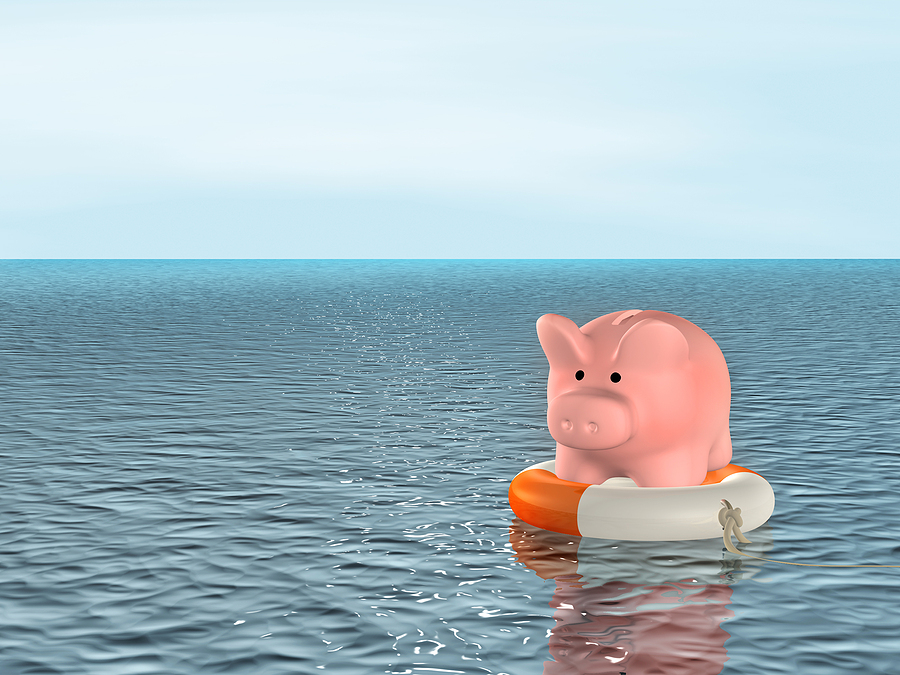Your One-Stop Resource For Reducing Debt In 2024

While the Federal Reserve Bank of New York reports that credit card debt rose above $1 trillion in the third quarter of 2023, 33% of Americans say they have a plan to pay down their balances (according to the NFCC Consumer Financial Readiness Survey). If this sounds like you or if you are in need of some help creating a plan to improve your financial position, then you’re not alone – but having a plan of action remains the critical next step.
For many, making a plan to pay off debt requires a holistic approach. This means changing spending behaviors coupled with resources that are available to you to help achieve your debt reduction goals. If you’re ready to take the next step, the National Foundation for Credit Counseling is here to help with this one-stop resource for reducing debt.
Let’s do this!
Transfer the balance of your credit cards for a lower interest rate
To compete for your business, credit card companies offer many appealing perks, such as travel rewards, cashback points, priority access to the latest concert tickets, and fashionably designed plastic cards that look great in your wallet. But the most appealing incentive of all isn’t concert tickets or points, it’s a low introductory Annual Percentage Rate, or APR. If you aren’t behind on payments, have a decent credit score and have high-interest rate credit cards, look into a 0.00% APR balance transfer card, where a credit card will allow you to transfer your debt for up to 21 months with no monthly penalty. They typically charge a one-time fee or percentage of balance to open the account. By eliminating the monthly APR penalty, you can focus on rapidly paying down the principal on your debt. Pair this with a budget and a plan so that you don’t end up where you started.
Prioritize your debt payments
When determining how to prioritize your debt payments, you must have a strategy for which debt you pay first and how to reduce each over time most efficiently. Your debt may include high-interest credit cards, student loans, a mortgage, or personal loans. To determine the best loan reduction strategy, create a list of your balances on a sheet of paper or in Excel. Include the percentage rate for each. Two popular methods of paying the debt are the “Snowball” and the “Avalanche.”
Quick Summary of the Two Methods
Debt Avalanche
• Pay off debt with the highest interest rate first
• Most efficient overall because it minimizes interest expenses
• It may take longer than the snowball to pay off your first few debts
Debt Snowball
• Pay off debt with the smallest balance first
• Builds momentum and you can often see results early in the process
• It costs you more in the long run compared to the debt avalanche
For some, paying low-balance, low-interest debt can give you some quick success in reducing your debt. Gain some momentum by eliminating the small stuff let’s you later focus on the large debt. Others may choose to tackle the largest debt first as it may represent a psychological stress that can be relieved once it’s gone – a big win. Regardless of which to pay off first, organizing your debt in a prioritized and strategic list will expedite your progress.
READ MORE ABOUT SNOWBALL AND AVALANCHE HERE
Get on a monthly budget
Budget your debt payments the way you budget your cell phone bill, Netflix or gym membership – monthly! By setting these monthly parameters to our spending, you can easily understand the money you have coming in and the money you have going out (to pay bills) in a monthly period. Your monthly debt should be represented on your budget in two ways, principal and interest, each on its own line in your budget. It’s important to include principal in your budget or the debt won’t go down simply by paying interest alone.
We’ve created this free budget template, based on a simple “Money In / Money Out” principle that will allow you to balance your budget and spend within your means each month. This budget template (available below as a Microsoft Excel spreadsheet) succeeds because of our unique “Money In, Money Out” strategy. This strategy is the result of helping thousands of people like you fix their credit each year and escape the heavy burden of debt that, frankly, stresses everybody out.
While the Federal Reserve Bank of New York reports that credit card debt rose above $1 trillion in the third quarter of 2023, 33% of Americans say they have a plan to pay down their balances (according to the NFCC Consumer Financial Readiness Survey). If this sounds like you or if you are in need of some help creating a plan to improve your financial position, then you’re not alone – but having a plan of action remains the critical next step.
For many, making a plan to pay off debt requires a holistic approach. This means changing spending behaviors coupled with resources that are available to you to help achieve your debt reduction goals. If you’re ready to take the next step, the National Foundation for Credit Counseling is here to help with this one-stop resource for reducing debt.
Let’s do this!
Transfer the balance of your credit cards for a lower interest rate
To compete for your business, credit card companies offer many appealing perks, such as travel rewards, cashback points, priority access to the latest concert tickets, and fashionably designed plastic cards that look great in your wallet. But the most appealing incentive of all isn’t concert tickets or points, it’s a low introductory Annual Percentage Rate, or APR. If you aren’t behind on payments, have a decent credit score and have high-interest rate credit cards, look into a 0.00% APR balance transfer card, where a credit card will allow you to transfer your debt for up to 21 months with no monthly penalty. They typically charge a one-time fee or percentage of balance to open the account. By eliminating the monthly APR penalty, you can focus on rapidly paying down the principal on your debt. Pair this with a budget and a plan so that you don’t end up where you started.
MORE ABOUT LOWERING CREDIT CARD INTEREST RATES
Prioritize your debt payments
When determining how to prioritize your debt payments, you must have a strategy for which debt you pay first and how to reduce each over time most efficiently. Your debt may include high-interest credit cards, student loans, a mortgage, or personal loans. To determine the best loan reduction strategy, create a list of your balances on a sheet of paper or in Excel. Include the percentage rate for each. Two popular methods of paying the debt are the “Snowball” and the “Avalanche.”
Quick Summary of the Two Methods
Debt Avalanche
• Pay off debt with the highest interest rate first
• Most efficient overall because it minimizes interest expenses
• It may take longer than the snowball to pay off your first few debts
Debt Snowball
• Pay off debt with the smallest balance first
• Builds momentum and you can often see results early in the process
• It costs you more in the long run compared to the debt avalanche
For some, paying low-balance, low-interest debt can give you some quick success in reducing your debt. Gain some momentum by eliminating the small stuff let’s you later focus on the large debt. Others may choose to tackle the largest debt first as it may represent a psychological stress that can be relieved once it’s gone – a big win. Regardless of which to pay off first, organizing your debt in a prioritized and strategic list will expedite your progress.
READ MORE ABOUT SNOWBALL AND AVALANCHE HERE
Get on a monthly budget
Budget your debt payments the way you budget your cell phone bill, Netflix or gym membership – monthly! By setting these monthly parameters to our spending, you can easily understand the money you have coming in and the money you have going out (to pay bills) in a monthly period. Your monthly debt should be represented on your budget in two ways, principal and interest, each on its own line in your budget. It’s important to include principal in your budget or the debt won’t go down simply by paying interest alone.
We’ve created this free budget template, based on a simple “Money In / Money Out” principle that will allow you to balance your budget and spend within your means each month. This budget template (available below as a Microsoft Excel spreadsheet) succeeds because of our unique “Money In, Money Out” strategy. This strategy is the result of helping thousands of people like you fix their credit each year and escape the heavy burden of debt that, frankly, stresses everybody out.

Enroll in nonprofit credit counseling
Credit counseling is a service designed to help you make a plan for achieving your credit and financial goals through a review of your credit report and monthly budget. This credit counseling service is typically provided by accredited nonprofit organizations, and should be offered free of charge or low-cost.
A credit counseling session provides you the opportunity to work one-on-one with a certified credit counselor. The goal of the session is to take an inventory of your current financial circumstances and to discuss your goals moving forward. This session can take place via telephone, online, or in-person, depending on the specific agency.
At the National Foundation for Credit Counseling, we’ve hand-selected nonprofit partner agencies that are standing by to meet with you. You can contact them by clicking the button below:
Not ready yet? Read more on what to expect from a counseling session.
WHAT TO EXPECT DURING A CREDIT COUNSELING SESSION
Still considering your New Years Resolutions? Sleeping more, eating better, achieving mindfulness, and lowering your stress are all achievable goals in 2024, and financial fitness plays an important roll in all of them. Each year the NFCC guides thousands of people – just like you – into achieving their financial goals. We look forward to helping you achieve yours.



